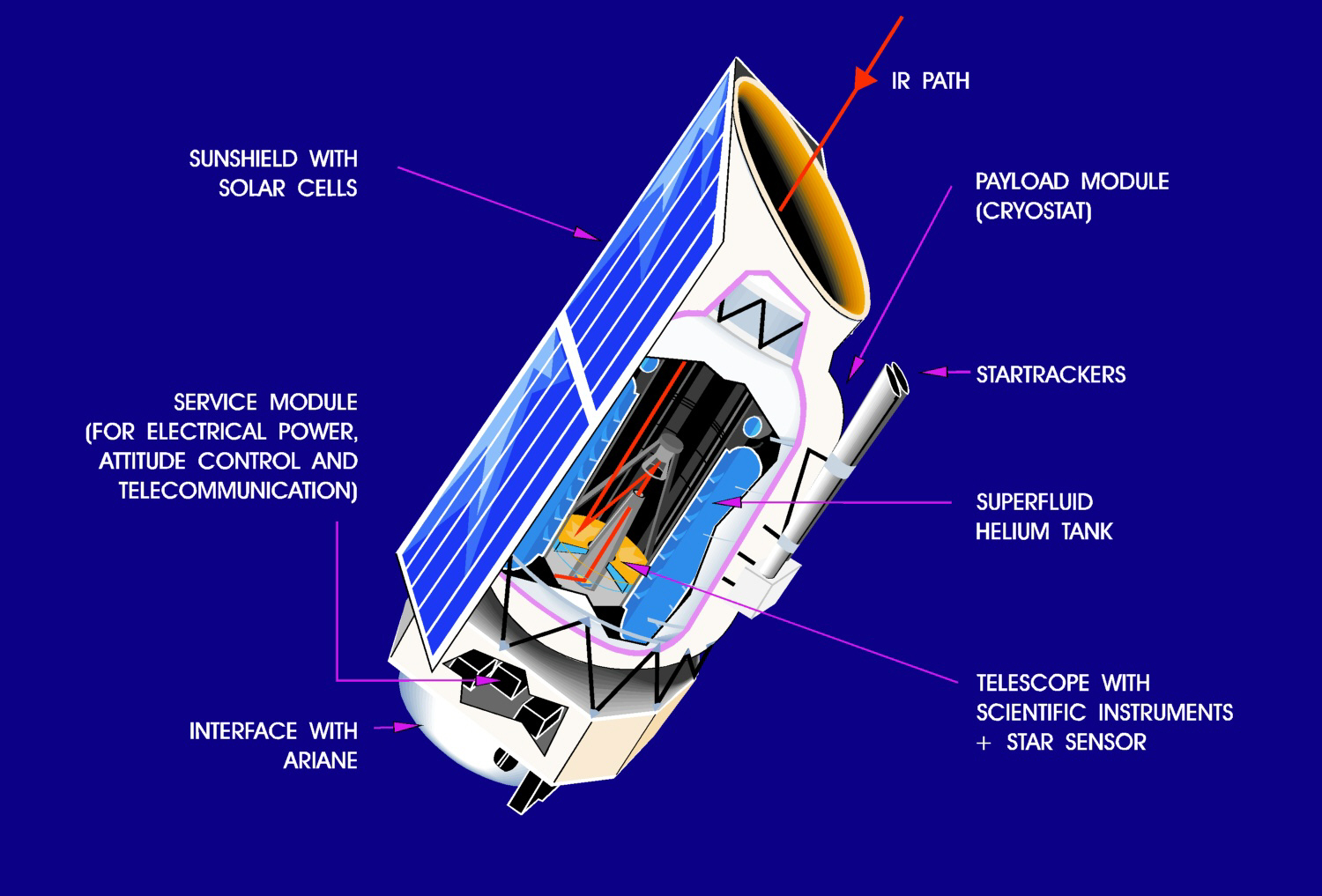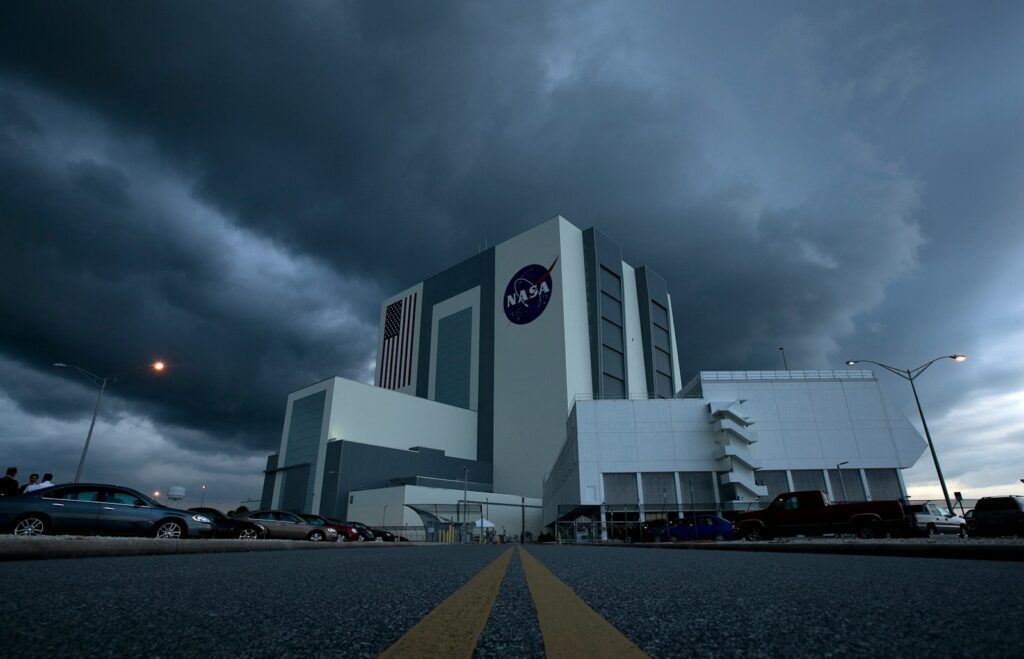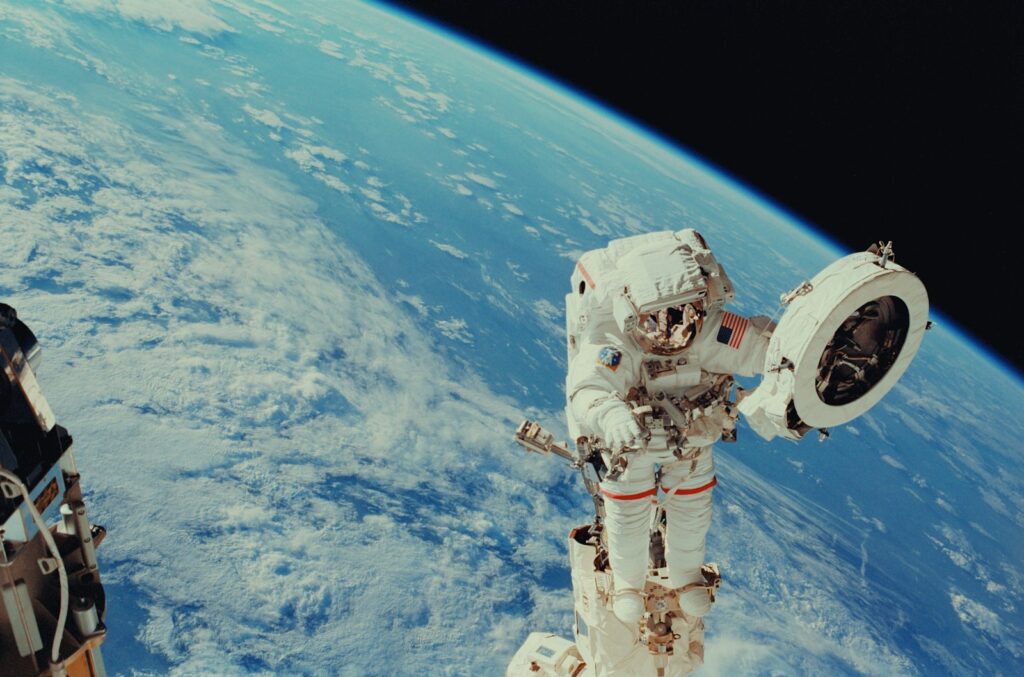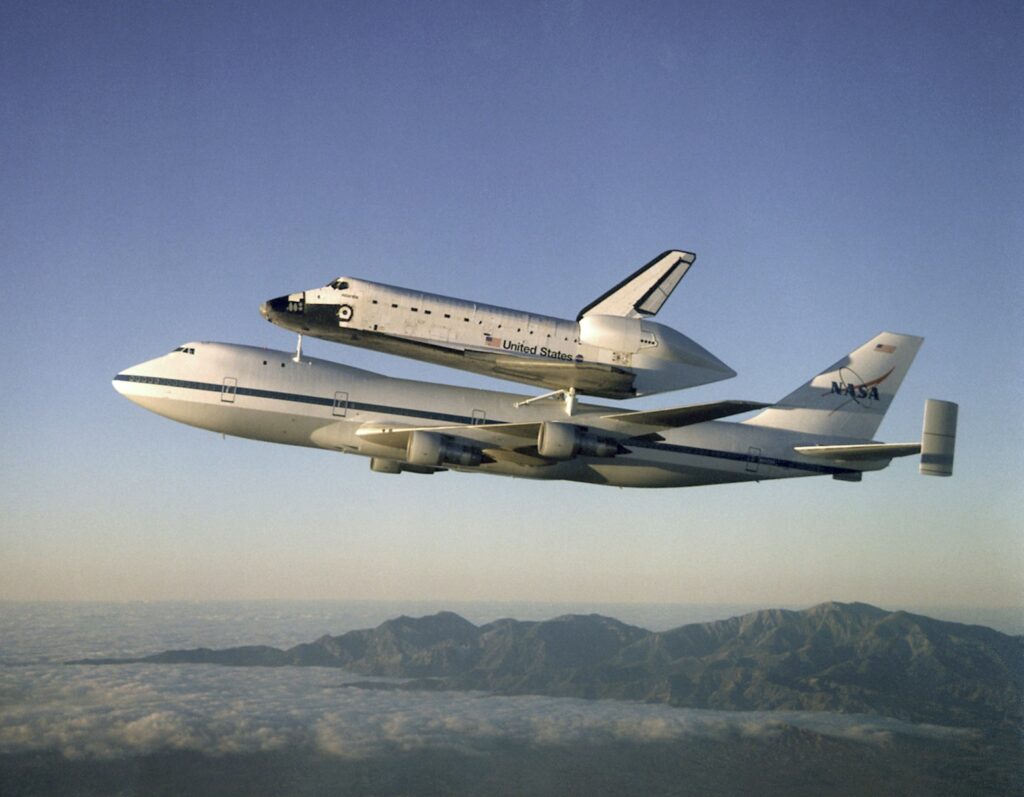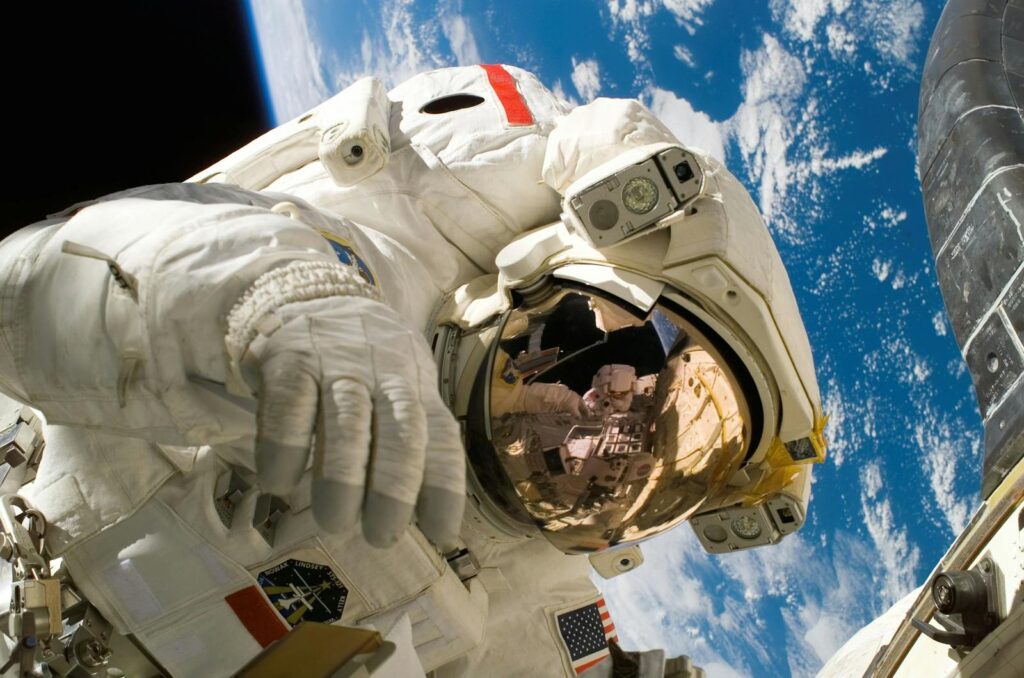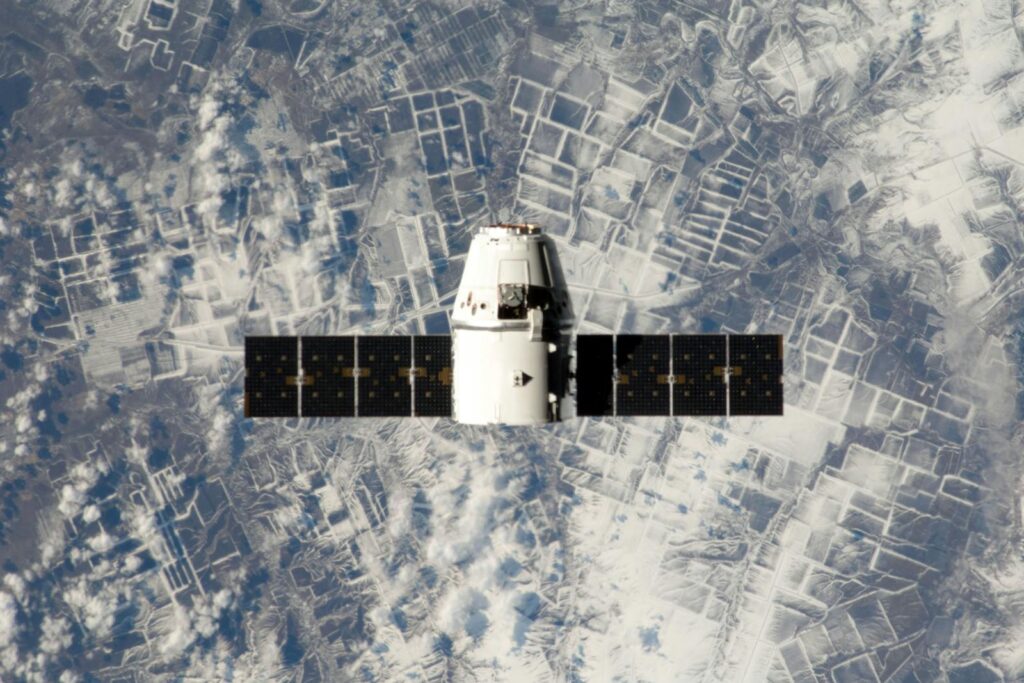Communicating with spacecraft across the vast expanse of space is an intricate and demanding undertaking, far removed from the instantaneous, crystal-clear video chats often depicted in science fiction. While cinematic portrayals suggest effortless connectivity, the reality involves overcoming immense distances, signal degradation, and power constraints, requiring sophisticated technologies and extensive engineering expertise.
NASA, through its Space Communications and Navigation (SCaN) program, is at the forefront of enabling this essential data exchange. Whether it’s connecting with astronauts on the International Space Station, guiding rovers on Mars, or supporting the ambitious Artemis missions to the Moon, SCaN orchestrates the complex web of communication infrastructure that brings vital information back to Earth.
This article delves into the fundamental challenges of space communications and explores the innovative technologies and capabilities that NASA employs to bridge the cosmic distance, ensuring the continuous flow of scientific data and operational commands crucial for exploration.
1. **The Basics of Space Communication: Transmitter and Receiver**At its most fundamental level, space communication operates on a remarkably simple principle: the interaction between a transmitter and a receiver. A transmitter begins the process by encoding a message onto electromagnetic waves through a method known as modulation. This process involves altering specific properties of the wave to accurately represent the data intended for transmission.
These modulated electromagnetic waves then embark on their journey through the vacuum of space, traveling towards their intended target: the receiver. Upon reaching its destination, the receiver’s role is to collect these incoming electromagnetic waves. It then performs the inverse operation, demodulation, to decode the sender’s original message, thereby reconstructing the transmitted data.
To better conceptualize this intricate process, one might consider the familiar example of a Wi-Fi router interacting with networked devices within a home environment. The router transmits data from the internet via wireless signals, which are then received by various devices. At its core, the complex endeavor of communicating with spacecraft across billions of miles fundamentally resembles this common household wireless communication system, albeit scaled up to an enormous degree, spanning incredible distances and facing far greater challenges.
This foundational two-part system—transmitter and receiver—forms the bedrock upon which all advanced space communication technologies are built. Understanding its basic operation is key to appreciating the engineering marvels that allow humanity to reach out and receive information from the farthest corners of our solar system and beyond.
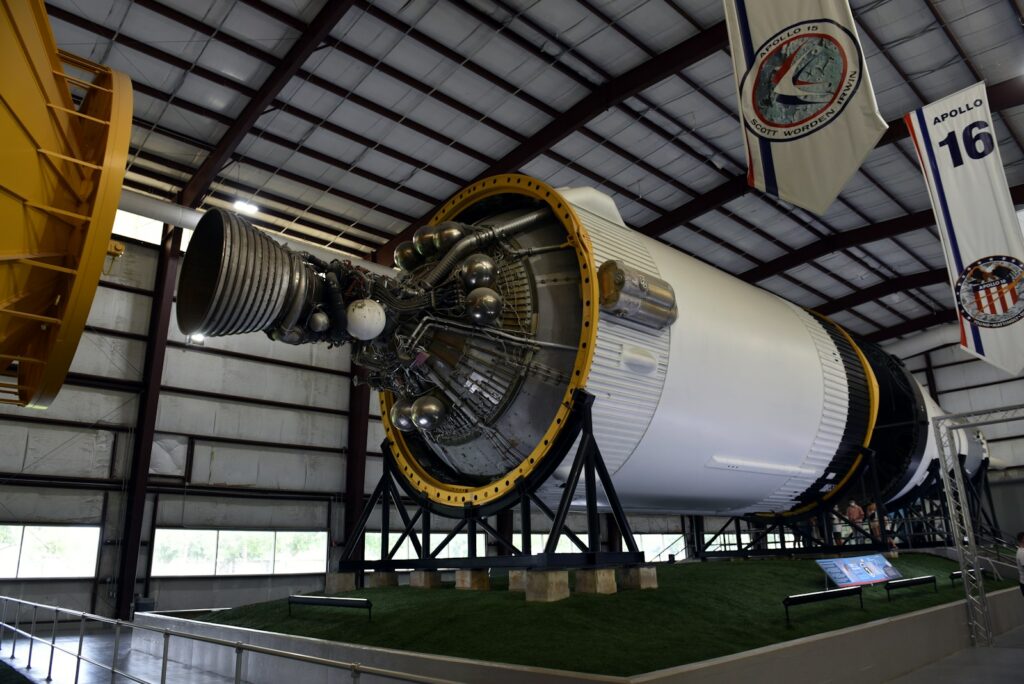
2. **Ground Networks: NASA’s Global Deep Space Network**Effective communication from space necessitates more than merely orienting a spacecraft’s antenna towards Earth. NASA manages an extensive and critical network of ground antennas strategically positioned across the globe, covering all seven continents. This comprehensive infrastructure is designed to reliably receive transmissions from spacecraft operating at various distances and orbital paths.
Network engineers meticulously plan each communication session between ground stations and missions. This careful coordination ensures that specific antennas are primed and ready to acquire and receive data as spacecraft traverse their designated overhead trajectories. The global distribution of these stations is paramount, providing continuous coverage as the Earth rotates, effectively preventing any loss of contact with missions.
NASA’s ground station antennas exhibit a considerable range in size and capability. On one end of the spectrum, small very high frequency antennas provide crucial backup communications for missions such as the International Space Station. Conversely, at the other extreme, monumental 230-foot (70-meter) antennas are essential for communicating with exceptionally distant missions, including the venerable Voyager spacecraft, which currently operates over 11 billion miles away from Earth. These powerful antennas are capable of detecting signals so faint they are 20 billion times weaker than what is required to power a digital watch, a testament to their remarkable sensitivity.
Such a robust global network is indispensable, serving as the primary conduit for the vast amounts of scientific data and operational telemetry that spacecraft collect. Without this intricate terrestrial infrastructure, the groundbreaking discoveries made by robotic explorers across the solar system would remain isolated in space, unable to reach the scientists and engineers awaiting their insights on Earth.
3. **Space Relays: Extending Reach Beyond Direct-to-Earth**Beyond direct-to-Earth communications, a significant number of NASA missions strategically leverage relay satellites to ensure their data reaches ground stations reliably. These orbital intermediaries play a crucial role in enhancing communication availability and efficiency, particularly for missions that might not always have a direct line of sight to terrestrial antennas.
A prime example of this system is the International Space Station, which routinely communicates through the Tracking and Data Relay Satellites (TDRS). These TDRS satellites act as intermediaries, transmitting data collected by the space station down to dedicated ground stations located in New Mexico and Guam. Similarly, the Mars 2020 Perseverance rover utilizes orbiters circling Mars to forward its collected data to Earth, bypassing the need for a direct, power-intensive transmission from the Martian surface.
The unique advantages offered by relay satellites primarily revolve around maintaining consistent communication availability. For instance, the strategic placement of three TDRS satellites in different regions above Earth provides comprehensive global coverage. This configuration enables near-continuous communication between missions in low-Earth orbit and ground stations. Instead of waiting for a spacecraft to pass directly over a ground station, TDRS users can relay data around the clock, seven days a week, dramatically increasing the efficiency and volume of data transfer.
This relay capability is particularly vital for missions that operate outside the constant view of ground stations or those with limited power resources for direct, long-distance transmissions. By effectively extending the reach of terrestrial networks into space, relay satellites ensure that critical mission data, from scientific observations to spacecraft health telemetry, can be transmitted promptly and consistently, optimizing mission success.
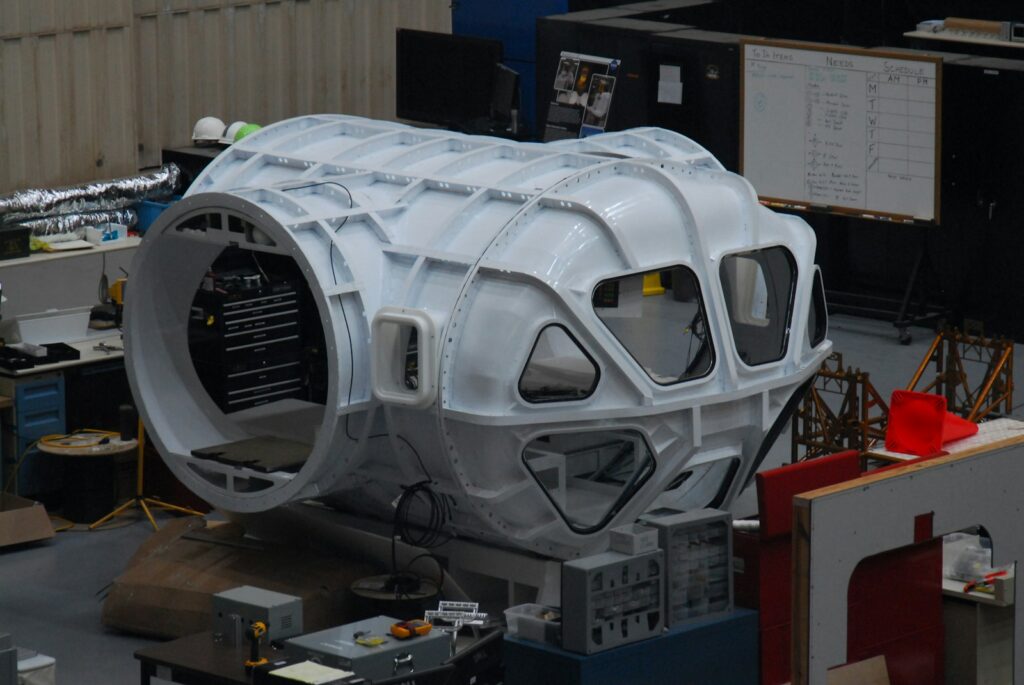
4. **Bandwidth: The Spectrum of Data Transmission**NASA’s approach to transmitting data from its missions relies on encoding information across various bands of electromagnetic frequencies. These distinct bandwidths, which represent specific ranges of frequencies, are not all created equal; they possess different inherent capabilities that directly impact the efficiency and volume of data transfer. Fundamentally, higher bandwidths are capable of carrying a greater amount of data per second, which in turn allows spacecraft to downlink their collected information much more rapidly.
Presently, radio waves constitute the primary medium for NASA’s space communications. This established technology has served as the backbone for decades of exploration, enabling countless missions to transmit data across vast cosmic distances. However, the agency is actively pushing the boundaries of communication by developing and implementing alternative methods, specifically focusing on the use of infrared lasers.
This advanced form of transmission is colloquially referred to as optical communications. The promise of optical communications lies in its capacity to offer missions significantly higher data rates than what is achievable with traditional radio wave systems. This technological leap is critical for future missions that will generate increasingly large volumes of complex data, such as high-definition imagery and video.
NASA’s Laser Communications Relay Demonstration (LCRD) stands as a pivotal mission designed to showcase the profound benefits of optical communications. LCRD is actively testing these capabilities by relaying data between ground stations in California and Hawaii using optical links. Furthermore, the International Space Station is slated to be equipped with an optical terminal, enabling it to relay data to the ground via LCRD, thereby integrating this cutting-edge technology into routine space operations and paving the way for a new era of ultra-high-speed space communication.
5. **Data Rates: From Grainy Video to 4K Ultra-HD**The advent of higher bandwidths directly translates into the potential for significantly increased data rates for space missions. This progression is vividly illustrated when comparing historical capabilities with future aspirations. For example, during the Apollo missions, radios transmitted grainy black and white video from the Moon, a remarkable feat for its time. However, an upcoming optical terminal planned for the Artemis II mission is designed to achieve a monumental leap, capable of sending 4K, ultra-high-definition video directly from lunar orbit, showcasing the dramatic evolution in data transmission capabilities.
It is crucial to understand, however, that bandwidth is not the sole determinant of data rates. A multitude of other factors can substantially influence how quickly data can be transmitted. These include the considerable distance separating the transmitter and receiver, as greater distances inherently attenuate signals. Furthermore, the physical size of the antennas or optical terminals employed on both ends of the communication link plays a critical role, as larger apertures can collect or focus more signal.
Another vital constraint is the power available to both the transmitting and receiving ends of the system. More power allows for stronger signals that can overcome noise and distance more effectively. NASA’s communications engineers are tasked with the complex challenge of meticulously balancing these various variables. Their expertise is essential in optimizing these factors to maximize data rates under the specific and often challenging conditions of each individual space mission, ensuring that precious scientific information is returned to Earth as efficiently as possible.
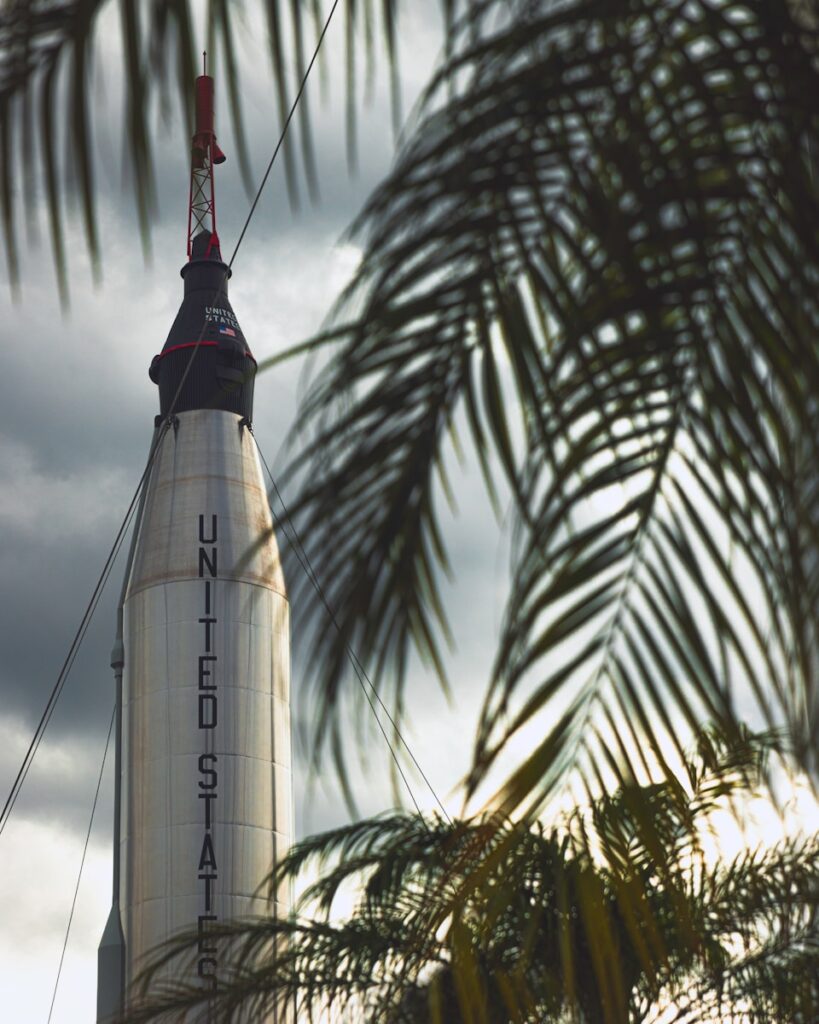
6. **Latency: The Universal Speed Limit in Space**Space communications, despite technological advancements, are fundamentally constrained by a universal speed limit: the speed of light, which travels at approximately 186,000 miles per second. This inherent physical constant means that communications do not occur instantaneously, but rather experience a measurable time delay, commonly referred to as communications latency.
For spacecraft operating in close proximity to Earth, this time delay is often negligible, barely perceptible in practical terms. However, as missions venture farther into the solar system, the challenge of latency becomes increasingly significant and impactful. Consider, for instance, communication with Mars. At its closest approach to Earth, approximately 35 million miles away, the communication delay is roughly four minutes.
This delay escalates dramatically when the two planets are at their greatest separation, reaching about 250 million miles, at which point the latency extends to around 24 minutes. Such a delay has profound implications for human exploration: astronauts on Mars would have to wait between four and 24 minutes for their messages to reach mission control on Earth, and an equal amount of time to receive any response. This means even a simple back-and-forth conversation could take nearly an hour.
As NASA actively prepares to send humans to the Red Planet, communications engineers are not only acknowledging these inevitable delays but are also developing innovative strategies for astronauts to remain connected with Earth. These strategies involve designing systems that can effectively manage and account for these inherent time lags, ensuring that critical operations and human interactions can proceed as smoothly as possible within the constraints of the speed of light.
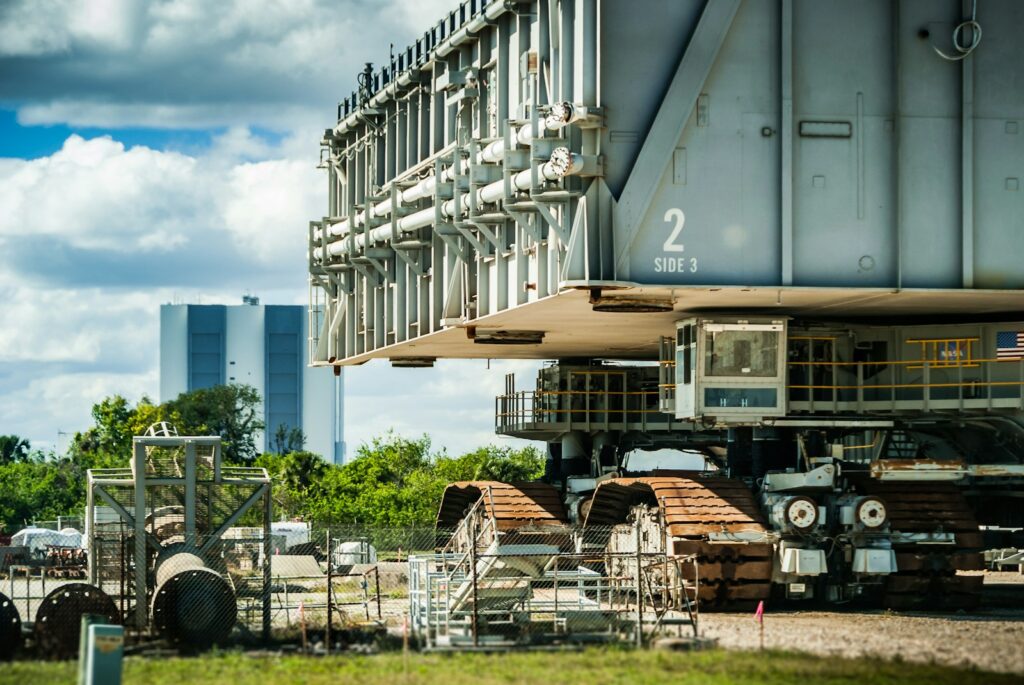
7. **Interference: Safeguarding Data Integrity in Deep Space**As communication transmissions traverse the immense distances of space or penetrate Earth’s atmosphere, the quality of their data is susceptible to deterioration. This degradation can manifest as garbled messages, making it challenging for mission operations centers to accurately interpret the incoming information. Several sources contribute to this interference, posing a constant challenge for reliable space communications.
One significant source of interference is radiation, which can originate from various celestial bodies and phenomena. Radiation emitted by the Sun, for instance, can disrupt signals. Other missions operating in space can also be a source of electromagnetic interference, as can natural radiation from other distant celestial bodies. These energetic particles and electromagnetic waves can corrupt the delicate signals carrying vital spacecraft data, blurring the distinction between information and noise.
To counteract these detrimental effects and ensure the reception of accurate data, NASA employs sophisticated methods of error detection and correction. These techniques are crucial for maintaining the integrity of transmissions over vast distances. One such method involves the use of advanced computer algorithms. These algorithms are specifically designed to analyze noisy or partially corrupted transmissions, interpreting them to reconstruct usable and accurate data, effectively discerning the intended message amidst the interference.
While the imaginative narratives of Hollywood often depict effortless, galaxy-spanning connectivity, NASA engineers are diligently working to transform these aspirations into a tangible reality. By developing and refining cutting-edge technologies and capabilities, the agency is systematically addressing the real-world complexities and challenges inherent in space communications. These continuous efforts are not merely about maintaining contact; they are about empowering groundbreaking science and exploration missions with robust, reliable communication services that can withstand the harsh and unpredictable environment of space, bringing invaluable discoveries back to Earth.
Read more about: The Hidden Car Feature That Could Track Your Every Move: A Consumer’s Guide to Disabling It
8. **Voyager 1’s Recent Communication Restoration**Voyager 1, a venerable spacecraft 47 years into its mission and now 15.4 billion miles from Earth, recently experienced a significant communication outage. In October, a command to activate one of its heaters triggered a safety mechanism, which unexpectedly switched off its main X-band transmitter. This left the veteran explorer momentarily silent to NASA’s Deep Space Network, as it had activated a lower-power S-band transmitter whose signals were too faint to be detected over such immense distances.
Engineers at NASA swiftly began efforts to diagnose and rectify this critical issue, recognizing the spacecraft’s advanced age and the inherent fragility of its systems. The problem arose from the heater drawing too much energy, prompting the fault protection system to respond. With all non-essential systems already powered down to conserve dwindling plutonium-derived energy, the system resorted to altering the primary communication channel, highlighting the delicate balance required to sustain such long-duration missions.
By early November, NASA engineers had successfully identified and resolved the problem, culminating in the restoration of X-band communication on November 18. This breakthrough enabled Voyager 1 to resume transmitting data from its four remaining operational instruments: the Low-Energy Charged Particle Experiment, the Cosmic-Ray Telescope, the Triaxial Fluxgate Magnetometer, and the Plasma Waves Experiment. The successful recovery underscores the ingenuity and persistence of the teams supporting these historic missions.
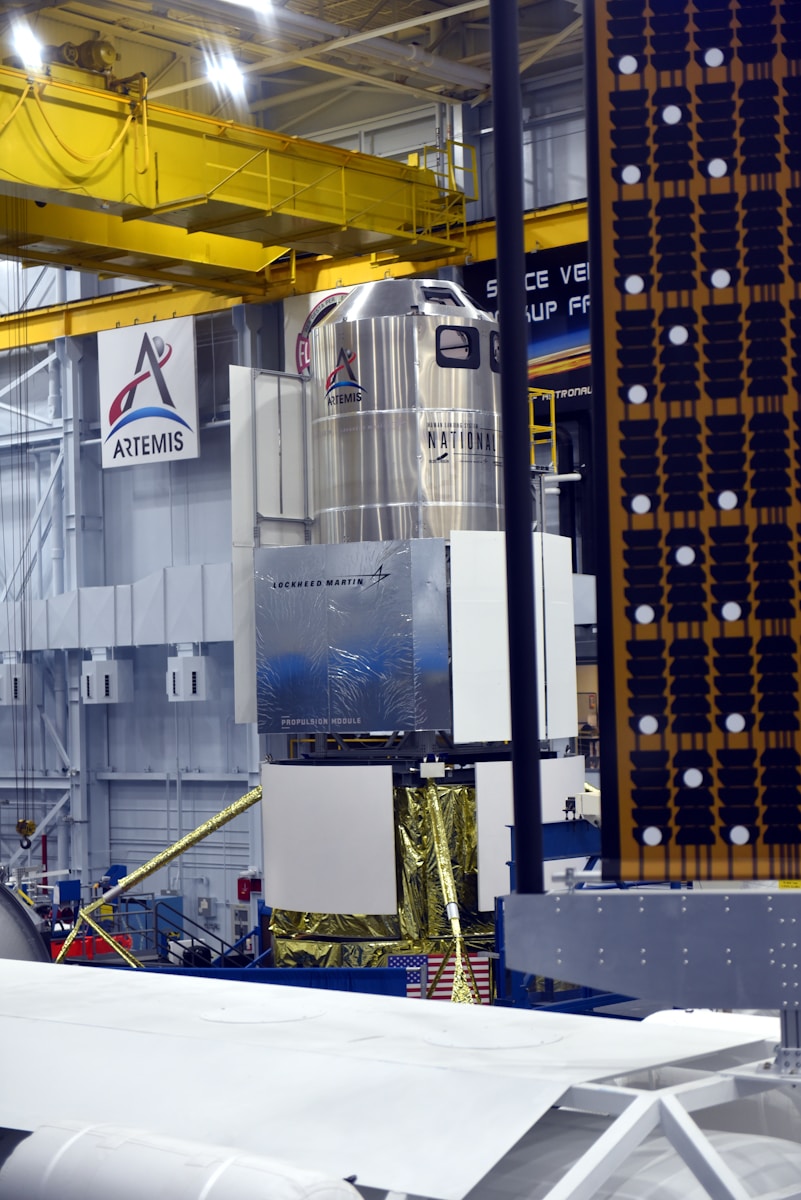
9. **The Enduring Challenges of the Voyager Missions**Voyager 1’s recent communication incident is not an isolated event, emphasizing the spacecraft’s increasing age and the harsh environment it navigates. In both 2022 and 2023, Voyager 1 encountered issues returning garbled telemetry, with the latter problem taking until the summer of 2024 to resolve. Its twin, Voyager 2, also experienced a period of communication difficulties in 2023, further illustrating the inherent fragility of these probes and their intricate subsystems after decades in space.
Both Voyager spacecraft are now considered elderly, operating in the cold, dark depths of the outermost solar system beyond the Kuiper Belt. They continue to function at temperatures lower than their original design specifications, a remarkable engineering feat. Engineers constantly monitor their diminishing power supply, as the decaying plutonium in their on-board radioisotope thermoelectric generators causes a loss of four watts of energy annually, progressively curtailing their operational lifespan.
Despite these significant challenges, the Voyagers have defied predictions that their power levels would have ceased functioning by now. Their continued operation, particularly of the remaining instruments, allows them to explore interstellar space, cementing their status as true trailblazers. The dedicated care and continuous engineering efforts exemplify humanity’s commitment to pushing the boundaries of exploration, striving for the magnificent achievement of these spacecraft reaching their half-century in space.
Read more about: Critical Evaluation: 11 Minivans Consumers Often Avoid and the Enduring Reasons Why
10. **Pioneering Deep Space Optical Communications (DSOC)**Beyond the enduring legacy of missions like Voyager, NASA is actively revolutionizing future space communication through Deep Space Optical Communications (DSOC). This cutting-edge technology employs near-infrared lasers to transmit messages back to Earth, promising a significant leap in data transfer capabilities. Unlike traditional radio waves, DSOC offers much higher bandwidth speeds, meaning a greater volume of data can be received more quickly from distant spacecraft.
NASA’s Psyche spacecraft, currently en route to the main asteroid belt, serves as the testbed for this groundbreaking demonstration. The initial “first light” test in November successfully detected a laser signal from 16 million kilometers (10 million miles) away, utilizing the Hale telescope. This early success proved the feasibility of transmitting optical signals over vast distances. Notably, among the messages sent during these early tests was a cat video, humorously illustrating the system’s ability to transmit complex data.
However, the implementation of optical communications presents its own set of technological challenges, including ensuring precise system alignment and establishing new receiving facilities. NASA researchers are therefore exploring a hybrid approach, combining both radio and laser communication, to leverage the best attributes of both systems. This strategy aims to ensure reliable and high-speed data transfer while addressing the practicalities of deep space operations.
11. **Psyche Spacecraft’s Record-Breaking Laser Signals**The Deep Space Optical Communications (DSOC) experiment aboard the Psyche spacecraft has consistently demonstrated its potential by achieving record-breaking data transmission rates over immense distances. On January 1, the system successfully downlinked a picture of the Psyche team from 32 million kilometers (20 million miles) away at an impressive rate of 15.63 megabits per second. This speed represents a rate 40 times faster than what is typically achievable with standard radio frequency communications.
Pushing the boundaries further, the optical communications demo reached a maximum data transmission rate of 267 megabits per second (Mbps) on December 11, 2023, when transmitting from 19 million miles (31 million kilometers) away. This speed, comparable to broadband internet download speeds on Earth, enabled the beaming of a 15-second ultra-high-definition video. Such achievements underscore DSOC’s capacity to deliver complex and data-intensive content, setting a new standard for deep space data transfer.
Even as the Psyche spacecraft ventures farther from Earth, the DSOC team continues to surpass expectations. During an April 8 test, from over 140 million miles (226 million kilometers) away—a distance equivalent to 1½ times the Earth-Sun distance—the spacecraft transmitted a copy of engineering data at a maximum rate of 25 Mbps. This far exceeded the project’s goal of proving at least 1 Mbps was possible at that range, cementing DSOC’s role as a transformative technology for future missions.
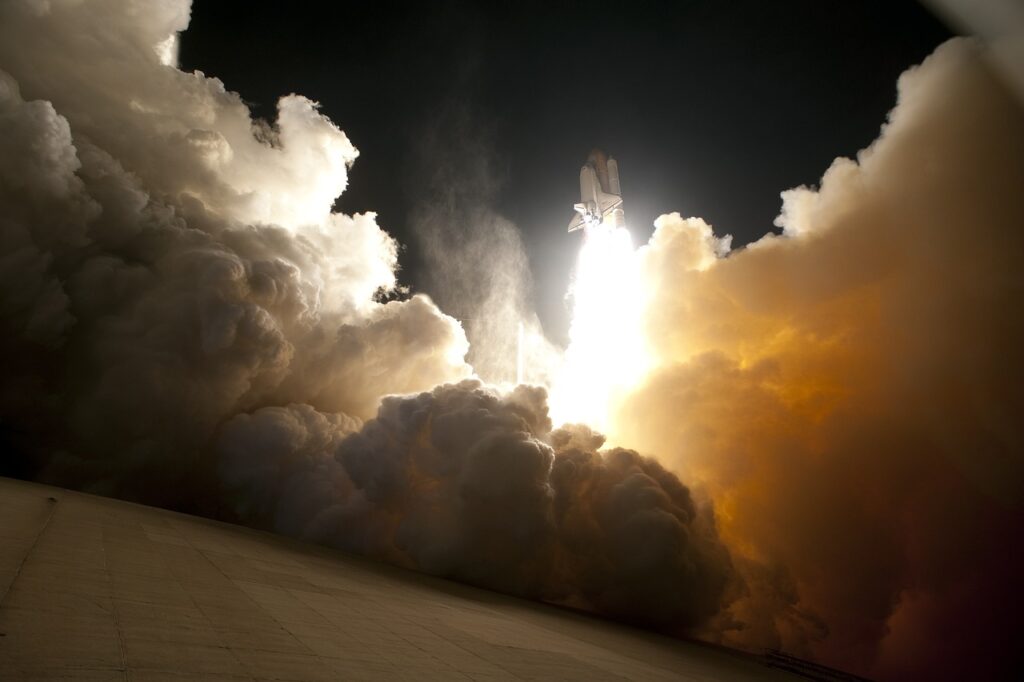
12. **The Hybrid Antenna Breakthrough**A pivotal innovation enhancing Deep Space Optical Communications (DSOC) is the development of hybrid antennas, which integrate optical capabilities into existing radio frequency infrastructure. NASA’s Deep Space Network Deputy Manager, Amy Smith, confirmed the success of this approach. She stated, “Our hybrid antenna has been able to successfully and reliably lock onto and track the DSOC downlink since shortly after the tech demo launched. It also received Psyche’s radio frequency signal, so we have demonstrated synchronous radio and optical frequency deep space communications for the first time.”
This breakthrough was achieved by retrofitting a small device comprising seven hexagonal mirrors onto an existing 34-meter (112-foot) radio antenna at Deep Space Station 13 in California’s Goldstone complex. Barzia Tehrani, JPL’s communications ground systems deputy manager, explained that this “high-tolerance optical system” uses mirrors, precise sensors, and cameras to actively align and direct the incoming laser from deep space into a fiber reaching the detector. This ingenuity avoids the need for entirely new, bespoke facilities.
The hybrid antenna concept promises substantial benefits, effectively converting “communication roads into highways,” as Tehrani put it. By enabling one asset to perform two critical functions simultaneously—receiving both radio and optical signals—it offers significant advantages in terms of saving time, money, and resources. This approach provides a clear path for seamlessly integrating advanced optical communications into NASA’s established global network.
Read more about: From Hollywood to the Driveway: 13 Wild Tales of Celebrity Car Thefts and Their Aftermath
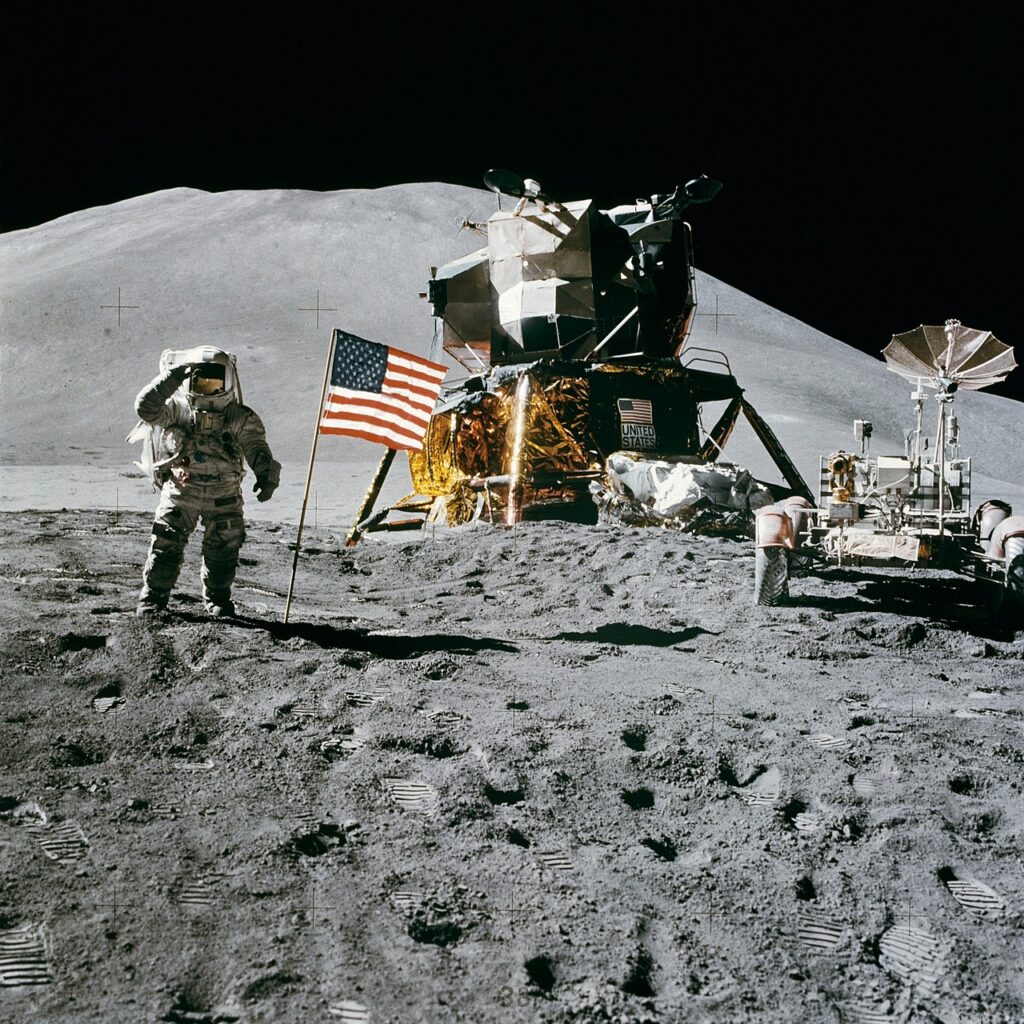
13. **DSOC: Paving the Way for Future Human Missions**The Deep Space Optical Communications (DSOC) demonstration is not merely a technological marvel but a strategic leap towards humanity’s boldest exploration goals, particularly sending humans to Mars. Trudy Kortes, director of Technology Demonstrations for the Space Technology Mission Directorate at NASA Headquarters, underscored this impact, stating that DSOC “paves the way toward higher-data-rate communications capable of sending scientific information, high-definition imagery, and streaming video in support of humanity’s next giant leap.”
A crucial objective of the DSOC experiment involves “closing the link,” a procedure where test data is sent simultaneously via both uplink and downlink lasers. This successful demonstration, requiring tandem efforts from DSOC and Psyche operations teams, confirmed the system’s ability to transmit, receive, and decode data effectively. This capability is vital for the interactive, near-real-time communication that will be necessary for human missions, where immediate data exchange is paramount.
While the DSOC technology demonstration does not directly transmit Psyche mission data, its operations are carefully coordinated with the Psyche mission-support team to ensure no interference with the spacecraft’s primary functions. The project’s continued success in transmitting pre-loaded data and receiving data, even relaying digital pet photographs in a “turnaround experiment” covering 450 million kilometers, proves its robustness and versatility. These advancements are building the essential communication backbone for unprecedented levels of human interaction and data flow from deep space.
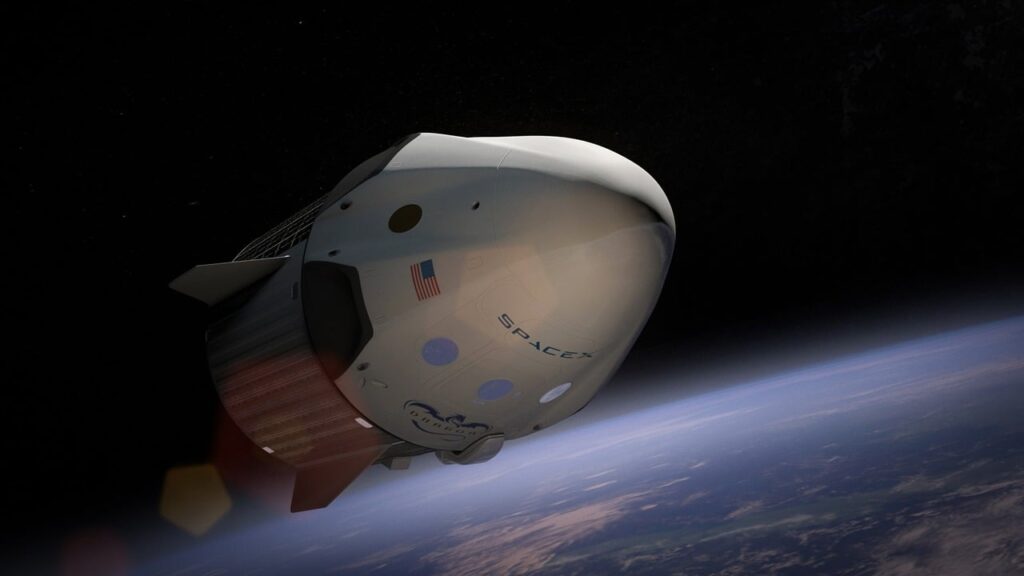
14. **The Curious Case of Relay 2: A Signal from Space Debris**In a surprising turn of events in June 2024, astronomers in Australia, utilizing the ASKAP radio telescope, detected a powerful, anomalous radio signal near Earth. Initially, researchers like Clancy James of Curtin University’s Curtin Institute of Radio Astronomy were excited, believing they had discovered an exotic, unknown astronomical object. The signal was so potent that it momentarily outshone everything else in the sky, prompting a rigorous investigation into its origins.
However, closer analysis revealed that the signal did not originate from a distant galaxy, but rather from approximately 4,500 kilometers (2,800 miles) away. Researchers identified the source as Relay 2, an experimental communications satellite launched by NASA in 1964. Its mission concluded in 1967, and it had since been orbiting as defunct space junk. The blurring in the telescope’s image of the signal provided a critical clue, indicating a nearby source with a curved wave front, rather than a flat one from far-off celestial bodies.
Astronomers propose two primary hypotheses for this unexpected burst. The leading theory suggests a massive short-circuit caused by a buildup of static electricity on the satellite’s metal skin. This electrostatic discharge, similar to static electricity experienced on Earth, could release a sudden, powerful spark. A less likely alternative is the impact of a micrometeorite, which could briefly convert debris into a plasma emitting a short burst of radio waves. Regardless of the exact cause, the incident highlighted the unforeseen potential for “dead” satellites to spontaneously emit powerful radio signals.
15. **Space Junk’s Growing Interference with Astronomical Research**The unexpected radio burst from the long-defunct Relay 2 satellite has brought into sharp focus a growing concern for astronomical research: the interference from space junk. Clancy James noted the signal was “by far the brightest thing in the sky, by a factor of thousands,” demonstrating how easily such events can mimic or overwhelm faint signals from deep space. This presents a significant challenge for astronomers, particularly those searching for elusive phenomena like fast radio bursts (FRBs) from distant galaxies.
Distinguishing between a transient astronomical event and a terrestrial or near-Earth anomaly becomes increasingly difficult with the proliferation of objects in Earth’s orbit. As more satellites are launched, both operational and defunct, the potential for confusing these human-made signals with genuine cosmic discoveries grows. James emphasized the need for “really careful” scrutiny to avoid misinterpreting satellite-generated bursts as astronomical objects, a task that becomes exponentially harder as the orbital environment becomes more congested.
This issue adds another layer to the already complex problem of space debris. Beyond the collision risks, the realization that satellites can spontaneously emit powerful radio signals underscores their potential to disrupt scientific observations. The ongoing growth in orbital infrastructure necessitates advanced methods of distinguishing natural cosmic phenomena from anthropogenic interference, ensuring that our quest to understand the universe is not inadvertently hampered by the very technology designed to facilitate it.
From the persistent whispers of the Voyagers across billions of miles to the ambitious laser beams of Psyche, and even the surprising “voice” of a half-century-old piece of space debris, humanity’s journey to communicate with and within the cosmos is a saga of relentless innovation and unforeseen challenges. NASA’s unwavering commitment to pushing the boundaries of technology, from robust ground networks to revolutionary optical systems, ensures that the vital flow of scientific data and the spirit of exploration continue to bridge the incredible distances of space. As we venture further, these communication breakthroughs are not just about sending signals; they are about connecting our curiosity to the universe’s deepest secrets, paving the way for future discoveries and the eventual human footsteps on distant worlds.

